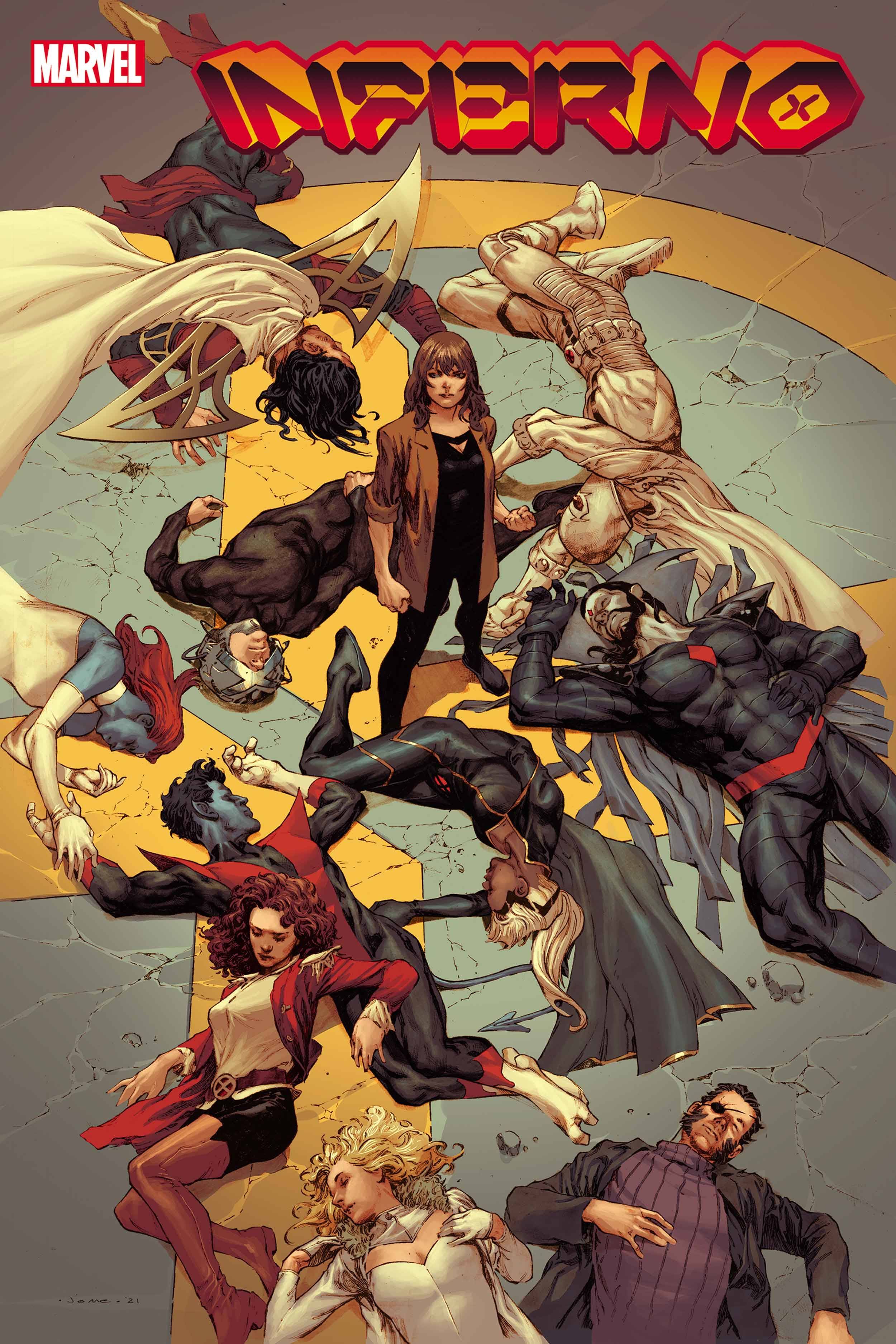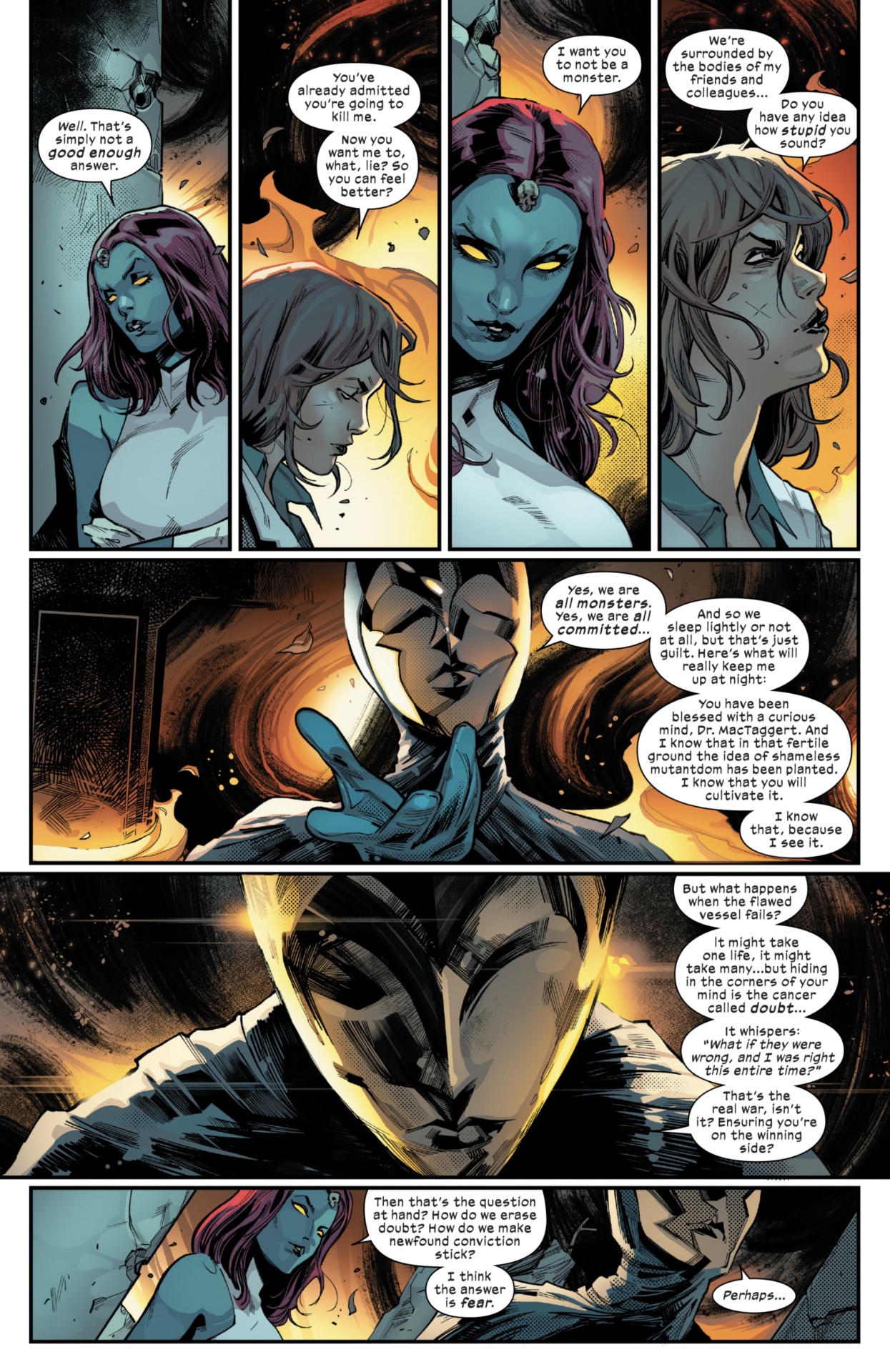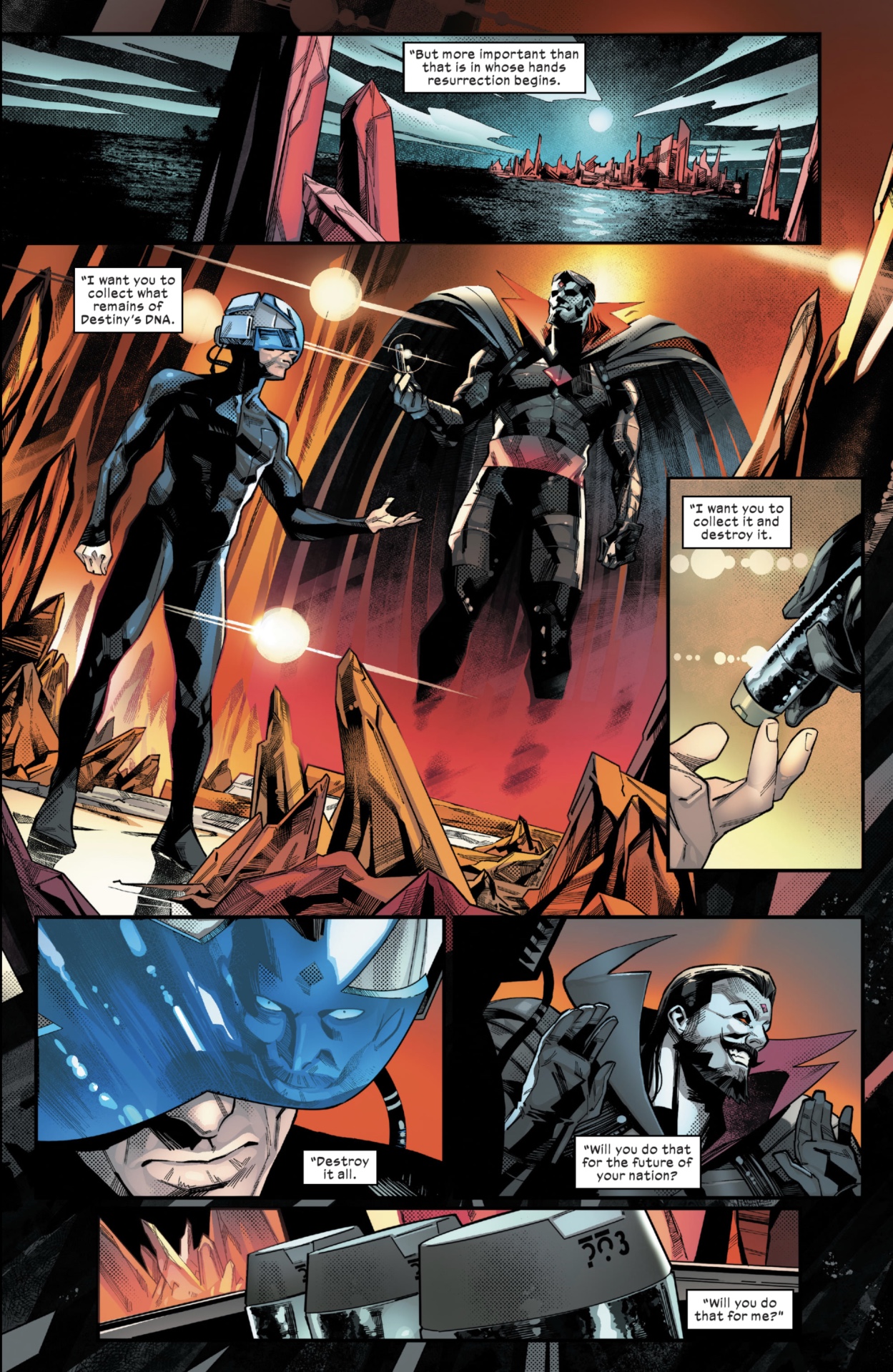Best Shots review: Inferno #1 pulls no punches to set up the perfect ending to Hickman's X-Men
(9 of 10 rating): Digging into the blistering heat of Inferno #1, the first issue of Jonathan Hickman's X-Men swan song

Jonathan Hickman's influence over the X-line cannot be overstated, but his approach has been so much different than so many of the comics auteur runs we've seen in the past. Instead of keeping a tight hold on the line, he's allowed a cadre of talented creators to stretch and expand the X-Men franchise in many different directions. But the publication of House of X and Powers of X did create a roadmap for Hickman's larger vision.
Written by Jonathan Hickman
Art by Valerio Schiti & David Curiel
Lettering by Joe Sabino
Published by Marvel Comics
Review by Pierce Lydon
'Rama Rating: 9 out of 10
While aspects of that have changed over the last two years as creators have explored this new status quo, Inferno allows Hickman to create another guidepost for the line for creators to riff off moving forward, as well as a natural jumping on point for new or lapsed readers. In so many ways, this provides a natural place for the line to rest, reshuffle, and move forward while paying off long-teased plot elements.
It's hard not to love the way Hickman works. By introducing larger overarching plot elements and guiding the rest of the line collaboratively with other writers, he's helped create an ecosystem for these characters that constantly feels additive even when questions don’t get answered right away. Inferno #1 is a perfect example of that.

The mystery of Moira MacTaggart has remained central to this status quo - we know about her many lives and powers of reincarnation - but we aren't quite sure how they work in a tangible way like other mutants. We don’t know everything that she knows. And if this issue is any indication, we don't even know if we can trust the account of the events that we saw in House of X/Powers of X. But we know the rules, and Hickman is a master at reminding us.
I'll get into some light spoilers here so skip ahead if you'd like. (And if you want all the details on the full, shocking events of Inferno #1, check out our analysis of what it means for the X-Men franchise right here).
Inferno works so well because, as long as you allow that some time has passed since the end of HoX/PoX, you could read this book as a direct sequel. You might not have all the details, but the major players are generally the same, and the goal of the book is to put into motion Destiny's words that have been lingering with readers and Mystique since she uttered them:
"There will be an island. Not the first, but the last. This place will seem to be hope for our kind. When those days come, remember these words: BRING ME BACK. And if you cannot... if they will not... then burn that place to the ground."

From that alone, I'm sure you can guess the big reveal.
Get the best comic news, insights, opinions, analysis and more!
The legacy of Charles Xavier and his dream is something that is going to come under fire forevermore when all is said and done. Granted, Charles has always had some questionable approaches to achieving that dream. But Xavier and Magneto's approach to protecting mutantkind's most valuable asset, Moira, almost feels like a bridge too far.
That said, it does feel like Hickman provides a path forward for other writers. With Charles and Erik sure to come under fire, and the Council staffed by more than a few characters that derive some pleasure out of seeing them squirm, what does new leadership look like for mutants and Krakoa? What is the next dream? What is the better version of it, and can it be protected without relying on such underhanded tactics?
Great first issues make you ask these kinds of questions, and even these are just barely scratching the surface of the philosophical ideas Inferno #1 calls to mind.

I'd be remiss not to talk about the art team. This era has developed a new Marvel house style, which has evolved primarily from the work of Pepe Larraz and RB. Silva. In Inferno #1, Valerio Schiti runs with that style, while also personalizing it, as well as anyone in the line.
This is a dense book that forces its art team to juggle a huge cast of characters and portray their reactions to everything that is happening. The final scene in this issue is a perfect example of that.
The slow reveal is tense and dramatic, even though Hickman's already revealed his hand here. We know exactly what’s about to happen, but Schiti keeps readers with bated breath the entire time. It's not just these small moments that Schiti excels at. Earlier in the book, he has to deliver the requisite action of a superhero comic, and he pulls that off with aplomb as well.
While there's an aspect to this book that forces the characters, and even on some level the readers, to go through the motions of things we have seen before, Schiti doesn’t rest on his laurels - delivering an experience that feels unique, even if it is familiar.

Colorist David Curiel deserves a ton of credit here as well. Similar to how Silva and Larraz have created a sort of house style for the current X-Men era, colorist Marte Gracia (who was along for the ride on Hox/PoX) was no slouch either. Curiel continues that good work but imbues Inferno #1 with warmer tones throughout, opting to replace Gracia’s lush green tones of growth and rebirth with oranges, yellows, and reds - a clear nod to the title, and maybe the impending destruction of what has been built on Krakoa.
We see those warm colors in just about any scene that features conflict or change, from the end of Moira's third life to Cyclops' passing the role of Captain Commander to Bishop, and finally in the second to last panel as Destiny forces Magneto and Charles to reckon with her existence.
Inferno follows in HoX/PoX's footsteps as the next big plateau in Hickman’s vision for the X-Men. It's another watershed moment, and even though it's basically a fastball thrown middle-middle, and we know it's coming, he still manages to blow us away.
In a medium where details and plot threads are teased forever and then forgotten or executed completely differently than they might have been originally intended, it's exciting to get some follow-through.
And for X-Men fans, that's especially exciting, given the line's historical penchant for rewriting things whole cloth as plans and personnel have changed. Somehow Inferno already feels as important as HoX/PoX. But in a way, much like the closing moments of this book, maybe that was always its destiny.
Time will tell if Inferno will find its way into the best X-Men stories of all time.
Pierce Lydon has been a contributor to Newsarama for over 10 years, writing everything from reviews to deep dive explainers, to interview pieces and best lists.


